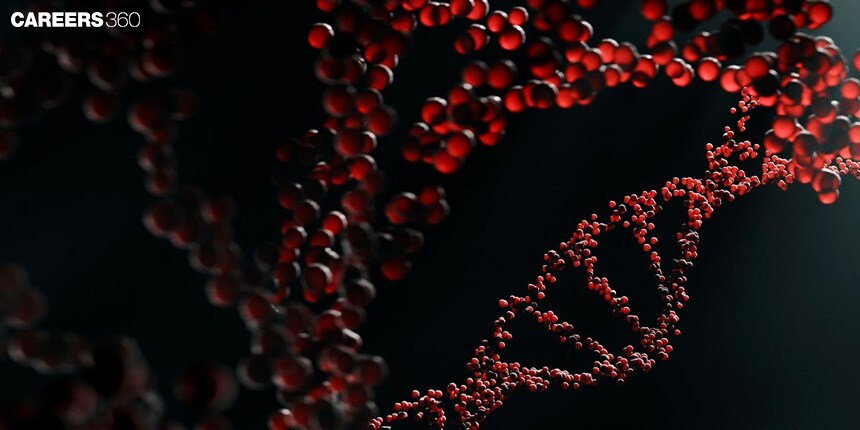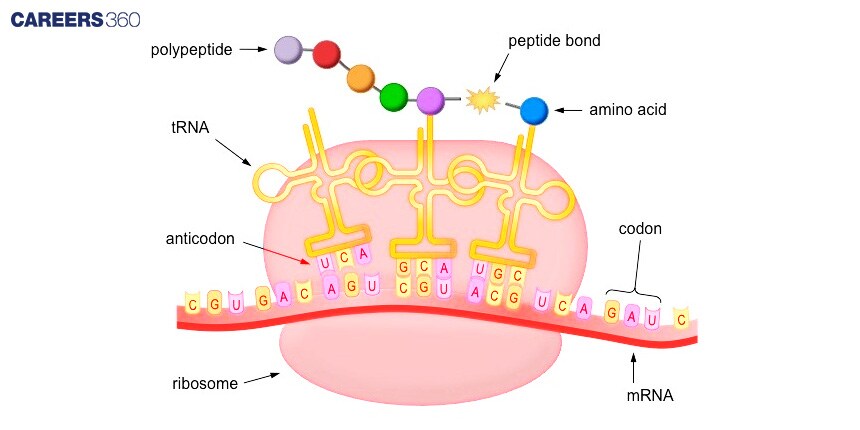Process of Translation in Biology: Definition, Steps and Process
Definition Of Translation
By definition, translation is one of the major biological processes by which the ribosomes synthesise proteins using mRNA as a template. The process is the critical portion of gene expression that allows genetic information embedded in DNA to be finally converted into active proteins. Since proteins play crucial roles in nearly all cellular functions, translation becomes the cornerstone of molecular biology.
- Definition Of Translation
- Diagram: Process Of Translation
- Key Components Of Translation
- Enzymes And Factors
- Stages Of Translation
- Details Of Translation Mechanism
- Recommended video for the Process Of Translation
- Post-Translational Modifications
- Regulation of Translation
- Common Mistakes In Translation
- Applications Of Translation Study

Translation plays a very critical role in gene expression, as it dictates both the type and amount of proteins that will end up in the cell. Indeed, it is rather tightly regulated. The process of synthesis is so managed that wrongly synthesised proteins sometimes are not read. Mistakes of translation produce malfunctioning proteins that can cause diseases and developmental problems.
Diagram: Process Of Translation

Key Components Of Translation
The key components of translation are as follows:
Messenger RNA (mRNA)
mRNA is a single positively charged molecule that helps carry information from DNA at the top to the ribosomes.
It has a chain of nucleotides that holds information on the sequence of amino acids for a certain protein throughout the cellular environment.
The structure contains a 5' cap and a 3' poly-A tail, which both protect the mRNA from degradation; directly between lies the coding region, essential in its translation.
Ribosomes
Ribosomes are cellular protein manufacturing machines. A ribosome has two subunits: the small and large subunits.
The small and large subunits in prokaryotes measure 30S and 50S respectively, while in eukaryote organisms they measure 40S and 60S respectively.
In other words, ribosomes mediate messenger RNA transfer RNA binding and catalyze peptide bonds between amino acids.
Transfer RNA (tRNA)
The tRNA molecule acts as an adapter that picks up and carries the appropriate amino acid corresponding to the particular codon in the mRNA strand.
Every tRNA has some region for the anticodon and a site for attaching a particular amino acid.
Correct pairing of tRNA anticodons with mRNA codons guarantees that amino acids will be added to the polypeptide chain in the correct order by the process of protein synthesis.
Amino Acids
The building blocks of the proteins are amino acids. There are 20 different amino acids. Each one has a different side chain.
It is what determines the structure and thus function of a protein which is how the nature and sequence of the amino acid in the chain.
During translation, these are linked by peptide bonds to form a polypeptide chain.
Enzymes And Factors
Many enzymes and factors are involved in ensuring translation occurs with appropriate accuracy and speed. Initiation factors help bind the ribosomal subunits and the first tRNA to the mRNA strand. Elongation factors assist in adding more amino acids to the polypeptide chain, while termination factors help in releasing the completed polypeptide from the ribosome once the stop codon has been encountered.
Stages Of Translation
The stages of translation are mentioned below:
Initiation
The first step to take is the initiation step by the process of translation. This is when the translational apparatus gets assembled on the mRNA molecule.
In a simple sense, this occurs with the binding of the small ribosomal subunit with mRNA at its initiation codon, which is AUG.
These are assisted in doing this by initiation factors. Initiator t-RNA, charged with methionine, base pairs with the initiation codon and then the large ribosomal subunit joins the complex thus forming an initiation complex.
Elongation
In the elongation stage, amino acids are added to the growing polypeptide chain one by one.
Elongation is a three-step process: codon recognition, formation of peptide bonds, and translocation.
First, the appropriate tRNA diffuses into the A site of the ribosome so that its anticodon bonds with the mRNA codon.
Then, a peptide bond is formed between the amino acid attached at the P site of the tRNA and the amino acid in the A site.
Translocation
The final stage of each elongation cycle is translocation.
The ribosome moves one codon along the mRNA–shifting the tRNAs and the associated growing amino acid chain.
The tRNA in the P site translocates to the E site and is released, and the tRNA in the A site, now holding the growing chain of polypeptides, translocates to the P site.
In this manner, this cycle (initiation, elongation, translocation) is repeated according to the sequence of nucleotides in the mRNA – adding amino acids one at a time.
Termination
Termination also occurs when a stop codon pattern is reached on the mRNA. No tRNA anticodon corresponds to stop codons.
Instead, the RF release factor binds the stop codon and induces the disassembly of the translation complex.
The newly synthesised polypeptide is released from the ribosome, and the two subunits of the ribosome dissociate and can start another round of translation.
Details Of Translation Mechanism
The details of translation mechanism are listed below:
Initiation
Initiation follows some important steps. The small ribosomal subunit joins to the mRNA close to the start codon.
The initiator tRNA with methionine is placed over the start codon—AUG—by the initiation factors at the AUG codon.
The big ribosomal subunit is added lastly to the complex. One entire initiation complex is made. Translation starts instantly.
Elongation
Elongation occurs by a cyclic method of similar repeated steps.
The ribosome promotes the correct matching of tRNA anticodons with mRNA codons in the A site.
A peptide bond is then formed between an amino acid that is in the P site and an amino acid that is in the A site by the peptidyl transferase activity of the ribosome.
Then the ribosome translocates, shifting the tRNA to the P site, itself moving one codon upstream on the mRNA; then a new tRNA enters the A site to initiate the process anew.
Termination
When a stop codon reaches the A site, release factors bind the ribosome and implement polypeptide chain release.
Then the ribosome disassembles into its subunits; mRNA and tRNA are released and translation is complete.
The newly synthesised polypeptide folds. Possibly further post-translations take place.
Recommended video for the Process Of Translation
Post-Translational Modifications
Consequently, post-translational modifications become obligatory for the final functional forms of proteins. PTMs are capable of modulating the activity, stability, and interactions of any protein. Examples of common PTMs include phosphorylation, whereby a phosphate group is added and this turns on or off the activity; glycosylation—an addition of sugar moieties to proteins—and proteolytic cleavage, meaning certain peptide linkages have to be cleaved to turn on or off the function of proteins.
Regulation of Translation
The controlled translation allows the correct number of proteins to be produced A, This is also the site where both microRNAs and RNA interference, bind with the mRNA preventing translation. B, Global regulation in response to nutrient availability will occur as well so the cells can regulate another environmental factor.
Common Mistakes In Translation
Types of mutations that can be made by translation errors include missense mutations, nonsense mutations, and frameshift mutations. Missense mutations result from misinserted amino acids, leading to changes in protein activities. Nonsense mutations provide a premature stop codon, which results in truncation of the peas. An example of frameshift mutations includes insertions or deletions, resulting in differing reading frames and thus different downstream amino acids.
Applications Of Translation Study
Understanding how translation takes place has much wider applications in biology and medicine—for example, new antibiotics can be designed which would specifically target the bacterial ribosome; drugs that would help in the case of genetic diseases; how translation errors result in genetic disorders and drugs that would help to overcome such disorders; and current advances in biotechnologies where genes and proteins are synthetically designed for use in industry and therapy.
Frequently Asked Questions (FAQs)
Translation is the process through which ribosomes enable the production of proteins on a template of the mRNA through phases of initiation, elongation, and terminators. In brief, the initiation, elongation, and termination will finalise having end components and processes that authorise the creation of an exact polypeptide chain.
Involved in initiation, elongation, and termination; initiation, elongation, and termination; and each of these defining elements and steps constructs an exact polypeptide chain.
Messenger RNA Love transports the genetic code from DNA to the ribosome and thereby, its nucleotide sequence getting translated into a chain of amino acids throughout, constitutes the way a protein is made.
They play a role in enabling the mRNA to interact with tRNA, which in turn catalyses the synthesis of peptidyl bond linkage between amino acids to build proteins.
The post-translational modifications change in chemistry and modification after synthesis enabling altered functions and, therefore, activity to be expressed. They are phosphorylation and glycosylation.
Also Read
29 Nov'24 09:31 AM
19 Nov'24 09:26 AM
18 Nov'24 06:45 PM
18 Nov'24 09:29 AM
18 Nov'24 09:18 AM
18 Nov'24 09:01 AM
18 Nov'24 08:37 AM
16 Nov'24 03:45 PM

